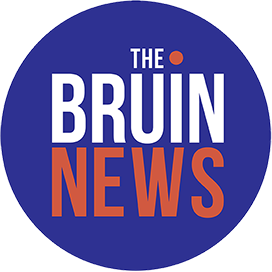By learning to analyze your diet, adapt necessary changes and plan ahead, a healthy diet is possible as a college student.
Eating healthy and fulfilling meals is a vital, attainable yet difficult goal. However, there are some simple steps that can be taken to help overcome obstacles in the way of achieving a stronger dietary balance.
Everyone has likely heard plenty of times how important eating healthy is, but that doesn’t mean we know how to get there, or even where to start. Plenty of obstacles come between the average student and a healthy diet, including knowledge, time and money.
Kellogg Community College student Landon McClure said his biggest barrier to eating healthy is, “eating a proper surplus of vegetables and avoiding products containing high amounts of sugar.”
McClure also said that he wasn’t aware of any services offered by KCC to assist him with achieving a healthy diet.
So what can we do about these issues?
To tackle these barriers, we must first establish what it means to eat healthy. According to health.gov, “eating healthy means following a healthy eating pattern that includes a variety of nutritious foods and drinks.”
Unfortunately, that alone doesn’t tell the full story on how exactly to eat healthy. KCC professor Anne Jost, who teaches a fall-semester class on nutrition, provided insights that assisted in the creation of a three-point guide to bypass these hurdles and achieve a more healthy diet.
1. Analyze
Jost recommends beginning your healthy eating journey with some self-diet analysis.
In her nutrition class, Jost has her students use Cronometer to analyze their current diet. Cronometer is a free website that allows students to see what their diet is lacking and what it has in excess.
Referring to this website, Jost said, “College students are very busy and tend to eat processed foods and fast foods high in salt and saturated fats. They are often very surprised just how many key nutrients are lacking in their diets when they do this activity. It would be beneficial for all students to use something like this to see where they can make some improvements.”
Analyzing your own diet and learning where it falters is the first step in overcoming knowledge barriers.
2. Adapt
Once students have analyzed their diets, their next step is to learn how to remedy its issues.
Jost recommends the use of myplate.gov to learn how to fill nutritional gaps. MyPlate provides information on dietary needs based on food group. The site gives examples of what items could meet your needs for each food group and how much of each item you need depending on factors like age and sex.
For example, a woman in their 20s to 30s requires 1.5 to 2 cups of fruit per day, which could be met by one orange and half a banana.
By learning how to fill gaps in your diet, you can begin implementing the necessary changes. However, simply understanding how to fill these holes isn’t always enough to fully implement change into your lifestyle, which is where point three comes in.
3. Plan
Time is a major factor in deciding how and what we eat. The best way to overcome time restrictions in our day-to-day life is to plan meals ahead. Plan out and prepare what you will eat on each day of the week to meet your nutritional and caloric requirements and save time.
As a student, you may not have time between classes to find a healthy meal, which is what makes meal preparation all the more important. The idea behind meal preparation is to spend some spare time preparing meals for when you don’t.
One resource to use to get started with meal preparation is eatthismuch.com. Eat This Much allows the user to create entire meal plans for free based on various dietary restrictions in literal seconds.
Eating healthy doesn’t have to be expensive, either. For more inexpensive healthy meal ideas, Jost recommends “32 Cheap, Healthy Meals That Cost Less Than $3 Per Serving,” an article in Better Homes & Gardens online magazine by Wini Moranville and Karla Walsh.
This article is just one great source of homemade meals that can be incorporated into your meal plans.
By integrating these three concepts and utilizing the suggested tools, a student can begin their journey toward a more healthy and balanced diet.
As a general rule of thumb, and a great place to start your dietary journey, Jost said, “The less something is processed, the healthier it is. Also, the less something is prepared, the cheaper it usually is.”
























